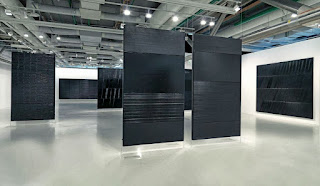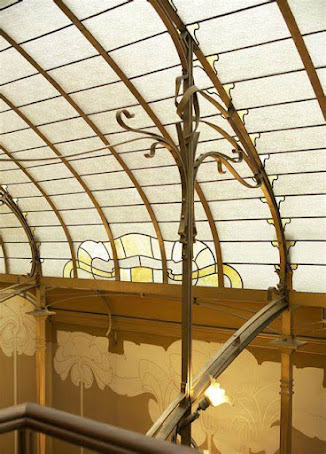Pierre Soulages (1919-) was born in Rodez, France and moved to Paris to study art. However, he decided not to go to art school and returned to his home.
In 1940, he was called to serve in World War II. After the war, he returned to Paris, found a studio, and had his first exhibit at age 28. Since then, he has received many awards and recognition. One of his outstanding achievements is to be the first living artist to exhibit in the The Hermitage in St. Petersburg, Russia.
During his long career, Soulages has dabbled in many different media. His works range from stained-glass windows to lithography, engraving, set designing and painting. He is most famous for his black paintings.
According to his bio, Soulages has always been fascinated with black. Even as a child, he used black to express himself in his paintings. (He doesn't find any of this strange because even the ancient drawings were made with charcoal.)
While traveling in East Asia, he was taken back to his childhood painting by the beauty of the Japanese black calligraphy on white paper. It was part of what influenced Soulages to paint a series in black which he titled, "Outrenoir." (Beyond Black)
This series would mark a turning point in his career. He is considered to be one of the most highly regarded abstract painters after WW2.
To quote Wikipedia: He sees light as a matter to work with; striations of the black surface of his paintings enable him to make the light reflect, allowing the black to come out from darkness and into brightness, thereby becoming a luminous colour"
Since making his gallery debut in 1947, Soulages has exhibited at the Museum of Modern Art,, the Louvre, and the State Heritage Museum (he was the first living artist to show at the institution), and his work has been acquired for the collections of the Centre Pompidou, the Guggenheim, Tate Modern, and the National Gallery of Art in Washington, D.C. At auction, Soulages’s work regularly sells for seven-figure prices.
*This remarkable artist will celebrate his longevity when he turns103 in December, 2022... félicitations et encore de nombreuses années à faire de l'art.






















